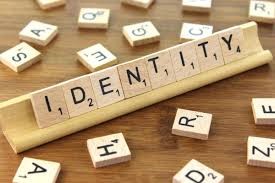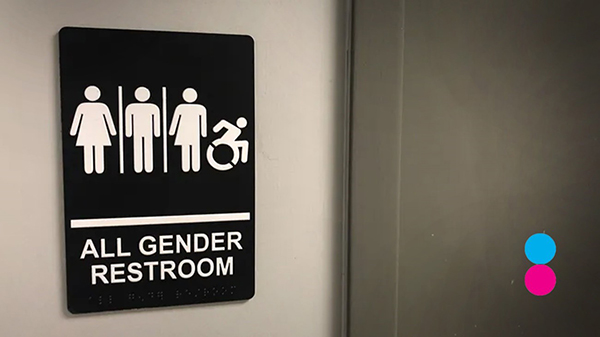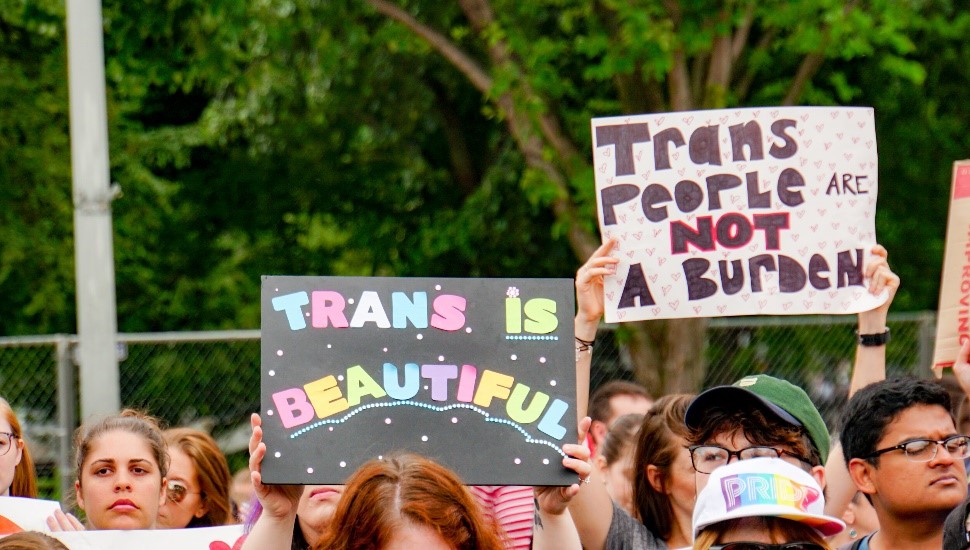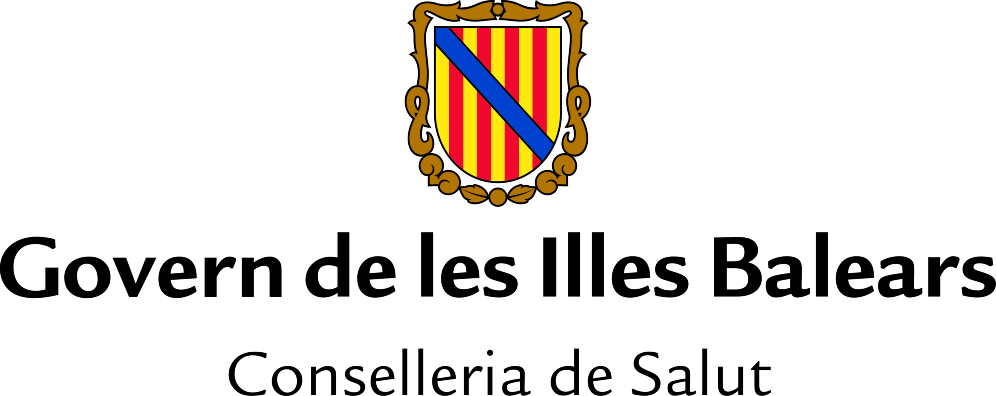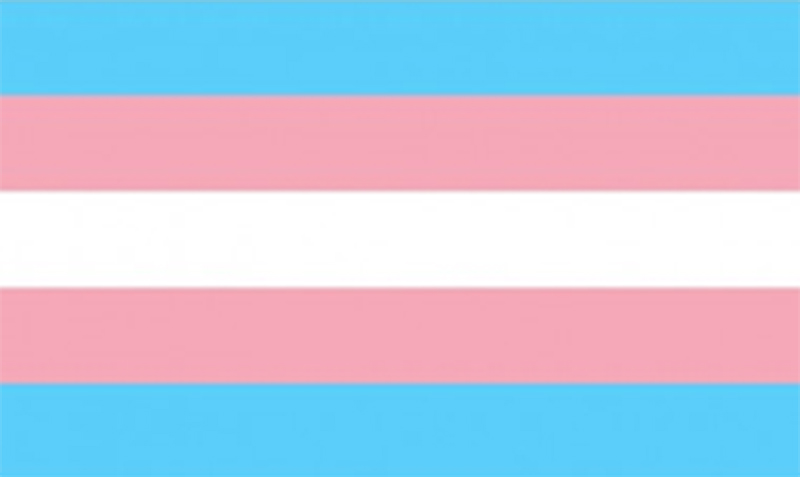
Marc is a 22-year-old engineering student who lives with his partner, Jose, 25, who is a firefighter. Up to this point, many people would claim that it is a relationship between two men, and that therefore, they are homosexual. Would you say it?
Sorry, I’m forgetting several details. Marc was born with a female body and genitalia, they called him Claudia until he was 11 years old, when he confessed to his parents that he was a trans boy. At 15 he began a process of hormones, changed her name and sex on her identity documents, and later underwent a mastectomy. Marc has no intention of modifying his genitals. Jose is a cisgender and bisexual guy, although since he’s been with Marc, he says he feels more identified with the label of pansexual. Do you understand it better now, or did I just mess you up?
This is a fictional example, although it is not far from any reality that we may find nowadays. It would be a very clear reflection of the sexual and gender diversity that exists in our society. The reason why many would recognize this relationship as homosexual (not wrongly said), is because we have already internalized the concept of sexual orientation. However, if we add the concept of identity to the equation, many are lost, and it is normal! Understanding it involves deconstructing a vision of the human being that has been ingrained for centuries: the presumption that we all are straight and cisgender.
In this article, we will try to clarify what gender identity is and what it means to be a transgender person. To understand this, we cannot rely only on brief definitions, but we must stop to observe their complexity. To conclude, we will make a brief note on how we can accompany trans people from the perspective of psychology.
What is gender identity?
To understand the concept, you will need to know what identity means, and what gender means. When we talk about identity, we are referring to what a person “lives” him/herself like, with all what this entails. This experience corresponds to the most intimate sphere of the person, so it is not governed only by what others consider or by what that person makes. Gender, on the other hand, is the social, cultural and symbolic construction of masculine and feminine. Depending on the place, society and historical moment in which we find ourselves, each gender will be assigned a set of behaviors, gestures, emotions, attitudes, clothing, games, professions, roles, etc.
That’s why we don’t usually see men wearing skirts, even though it’s common in traditional Scottish dress. For the same reason, until a few decades ago, it was difficult to see women wearing pants. For this reason, there are still more female stewardesses and nurses than masculine ones. For this reason, those people whose expression is the one assigned to their opposite gender are called tomboys or faggots. And so we could go on listing examples and more examples that reflect the pervasiveness of gender in our lives.
Gender identity, then, refers to one’s experience as a man or a woman (but also as both or neither, explained below).
The complexity grows when we see that we must separate gender identity from sexual orientation and sexual identity.
- Sexual orientation refers to what sex/gender I feel attracted to, or who I’m falling in love with (sex-affection). Hence the labels of straight, gay, lesbian, bisexual, and asexual.
- Sexual identity refers to the physical and biological characteristics that differentiate us between women and men. They are differentiated by primary (ovaries/testicles, penis/vagina) and secondary (body hair, voice, chest, general anatomy) sex characteristics. Here it is common to forget about intersex people, who would be those who are born with characteristics of both sexes. There are different abnormalities that can cause it. Depending on each one, it will be manifested in one way or another. They usually have reproductive organs that are on the way between male and female.
Let’s understand that we are reading this article because heterocisnormativity has traditionally been assumed. That is, it has been assumed that a person is born:
- of a particular sex (sexual identity, in which you can only be male or female, not intersex),
- being straight (majority and desirable sexual orientation)
- and complying with the canons of behaviour, expression, character, etc., that are assigned to him/her by his/her sex (cis gender identity).
The problem is that this vision is far removed from reality, which is much more diverse.
For example, the same person may be born with biological and anatomical characteristics of the female sex, like Marc, identify as male, like Marc, and be sexually and emotionally attracted to men, like Marc. Marc is a transgender person. That is, Marc is a person who feels identiied with a gender other than the one assigned to him by his sex at birth.
And from here, an even wider range of questions opens up: When does gender identity emerge? How is it formed? Are there different types? Is trans the same as transsexual? Etc.
Diversity within diversity
If we talk about transgender people, we are talking about identity processes, life processes in themselves, and at many times, transitions. Each of these people will experience a unique, unrepeatable and non-standardized process.
About the when?
Gender identity is formed throughout the life cycle, since gender is present at all times. Awareness of one’s own identity and doubts about it can also appear at different times. A summary table can be seen bellow:
| GENDER IDENTITY AWARENESS | DOUBTS ABOUT GENDER ID THROUGHOUT THE LIFE CYCLE |
| In the first few months, babies can discriminate between males and females based on the shape of their faces and their tones of voice. | |
| At two, three, or four years old: Infants have a lot of information about what society considers appropriate for each sex. | At preschool age, they may exhibit generalized behaviours of another gender and may exhibit an express desire to be of the other gender, or less commonly, they may label themselves as a member of the other gender. |
| In infants older than 4 years: They compare their behaviour, expression, and gender roles to other people’s.They can recognize when a behaviour, a taste, or a way of being (including their own) is different from what the community expects of their assigned sex. | In some cases, the expressed desire to be the other gender appears at the entrance to elementary school. A small minority will express discomfort with their sexual anatomy or will express wishing they had the sexual anatomy of the other gender (the sense). In children under 8 years of age, it is rare for them to express extreme or persistent anatomical dysphoria. Dysphoria becomes more common as puberty approaches. |
| Adolescence and youth: It is an identity crisis in itself, including sexual and gender crisis. At that point, many people may confront and challenge such expectations, norms, and gender valuations in the search for a personal identity. | Adolescence and youth: It is a tumultuous time in which you can go through moments of confusion about who you are. It is not uncommon for people with dysphoria at puberty to now identify as cis gay or bisexual people, but later the dysphoria reappears. |
| Adulthood and older adulthood: in general, the process of constructing gender identity continues, with greater acceptance and personal integration. People can rethink their gender identity at any age. |
Except for very clear cases, it is common that, in cases that appear between puberty and adolescence, it is chosen to wait a reasonable amount of time, until both the condition of transgender person and the decision to undergo medical treatment can be confirmed.
About the how?
Since each process is unique and unrepeatable, we already see that some will show security in their identity from an early age, and others will go through moments of doubt; that some will realize it sooner, and others later. However, this will be accompanied by many other factors that will reinforce these individualities. Among the most important, they are: the environment, gender deconstruction, transition, and mental health.
- Environment: as you can imagine, it is not the same identifying oneself as transgender in a country like Spain, than in a country where it is punishable by imprisonment. Nor is it the same to live in a city than in a village, in a tolerant or in a transphobic family, to grow up in a school where you are bullied for your identity or in another one where you are respected, etc.
Depending on the circumstances of the environment, recognizing yourself as a trans person and making it known can be more or less difficult. And after that first step, living fully and satisfactorily isn’t always going to be easy either. Having access to hormone therapies, being able to change your name in the registry, not being discriminated in your job, and many other things, can be experienced with a lot of uncertainty and as a battlefield.
- The deconstruction of gender: Even though there is still a whole set of characteristics that are associated with masculine and others with feminine, the reality is that the boundary between the two concepts is becoming increasingly blurred.
In addition to the above said, there are people who do not feel belonging to either of these two poles, who do not feel either feminine or masculine. They are called non-binary people. There are also people who feel their identity flowing between masculine and feminine, sometimes depending on the context.
The questioning of all this makes identity processes richer and more flexible, especially since it is part of social dialogue and education.
- Transition: Related to the environment, to the deconstruction of gender and to the pace at which one is able to identify, each person will have a unique identity process, as we said at the beginning. For many trans people, there will be a time in that process when they need and/or decide to transition, their own transition.
Transition is that period in which the trans person adopts those tools that they can and/or believe are convenient to be able to live according to their felt gender. No two transitions are the same, so there is also no single criterion for deciding when a transition begins and ends. There will be people whose transition consists of hormones and sex reassignment surgery. Others will only want to dress according to how they feel comfortable, others will do a hormonal process, but will not consider any surgical treatment necessary. Many will change their minds throughout their identity process, and their transition will be stopped and resumed as many times as necessary and/or possible. And finally, there will be people who consider themselves trans and don’t need to make any kind of transition.
In that sense, the terms transgender and transsexual can be differentiated. Transgender is preserved as that umbrella term that refers to the diversity of non-normative gender identities. Transsexual refers to that person who has decided to start some type of transition, either aesthetically, socially, anatomically-genitally, or any other self-respecting level.
Even so, many transgender people do not accept that differentiation, and prefer to use the trans label to refer to any of them, regardless of where they are in their personal process.
- Mental health: Preserving self-esteem and self-worth throughout one’s identity process can be a roller coaster. Above all, the environment will be the one that determines the difficulties that the person will have to build his life project; a life project in which he/she can feel fulfilled and happy being who he/she is. The greater the acceptance and facilities of the environment, the better the mental health the person will have.
Finally, the concept of “gender dysphoria” should be added to this section. It is a medical term that refers to the discomfort or suffering caused by the discrepancy between a person’s gender identity and the sex they were assigned at birth. It is important to mention it because it is intimately related to the mental health of trans people and only a few experience it. However, the rest can also suffer from it, in case their desired interventions are not possible.
The role of the psychologist in the accompaniment of trans people
From the discipline of psychology, what is known as LGBT+ Affirmative Psychology emerges. It is the psychology applied to the specific difficulties that affect the mental health of people with sexual and gender diversity (i.e., lesbian women, gay men, bisexual people, transgender people and all those included in the range of queer diversity).
If we could summarize its work, we would say that it acts on three aspects:
- The process of accepting one’s own sexual identity.
- The stress generated by the environment, the aftermath of LGBT+phobia.
- All the differential experiences of the LGBT+ community.
To learn more about this topic, we invite you to read the blog post dedicated to it: LGBT+ Affirmative Psychology.
Guillem Nicolau Coll
General Health Psychologist
Nºcol.: B-02773





